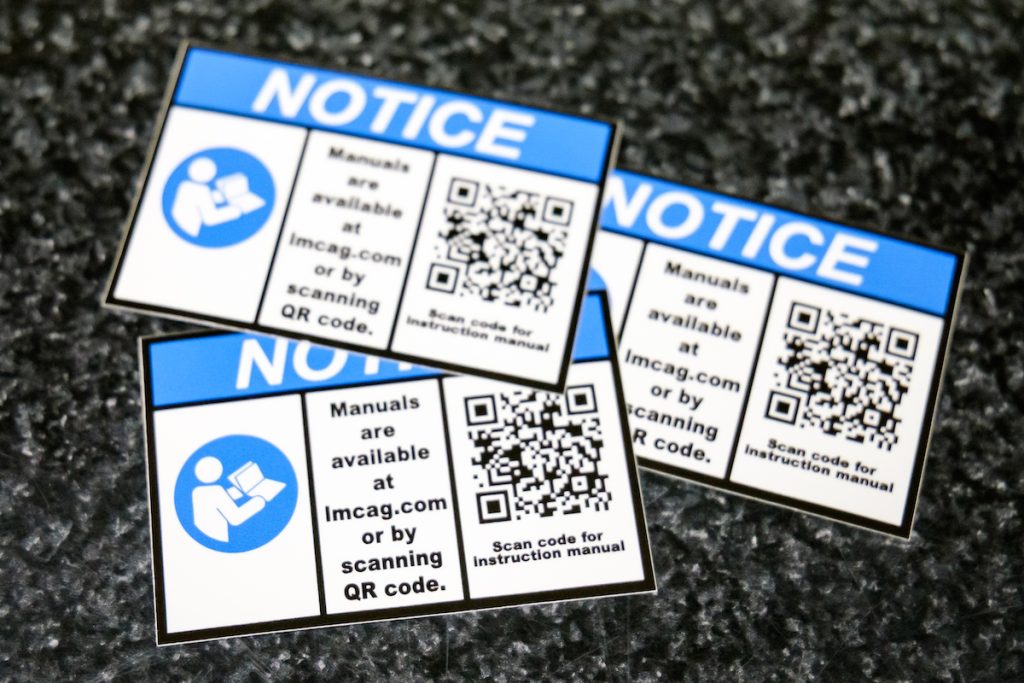As the seasons change, the durability and performance of outdoor and OEM labels are put to the test. Whether dealing with the sweltering heat of summer, the frigid cold of winter, or the unpredictable swings of spring and fall, labels must be designed to withstand a wide range of environmental conditions. Here’s how seasonal factors impact label performance and what to consider when selecting durable labels for your applications.
Temperature Fluctuations: A Challenge for Adhesives and Materials
The expansion and contraction of materials due to temperature changes can cause significant issues for labels. In colder temperatures, adhesives may become brittle, leading to a loss of stickiness and potential peeling. On the other hand, extreme heat can cause adhesives to soften, resulting in label slippage or bubbling. These temperature-driven changes emphasize the need for labels that are specifically engineered to maintain their integrity, regardless of the season.
UV Exposure: Protecting Against Fading and Material Degradation
Summer months bring increased sunlight exposure, which can lead to the fading of label colors and the weakening of materials. UV-resistant inks and coatings are essential to ensure that labels remain legible and visually appealing over time. Without proper protection, labels may become brittle or tear due to prolonged UV exposure, especially in outdoor environments.
To ensure that our labels can withstand such harsh conditions, we utilize the Q-Sun Test Chamber. This advanced tool tests how specific materials, inks, or processes will fare when exposed to the full spectrum of sunlight. By simulating and accelerating these severe conditions, the Q-Sun Test Chamber is invaluable for both R&D and Quality Control, ensuring that every label we produce is ready to perform in any environment.
Moisture and Humidity: The Importance of Water Resistance
Seasonal changes often bring varying levels of moisture, whether it’s from rain, snow, or dew. High humidity levels can also cause the adhesives on labels to emulsify and start to break down which leads to labels bubbling or peeling, particularly if they aren’t designed to handle such conditions. Water-resistant labels are critical for preventing ink smudging and maintaining the structural integrity of the label, even in wet or humid environments.
Wind and Abrasion: Durability Under Physical Stress
Strong winds and abrasive surfaces, like sand or dirt, can physically wear down labels. For this application, we have developed solutions to combat wear and tear, starting by using only the highest grade of abrasion-resistant inks. Additional protection is gained through our use of the following options:
Overprint Varnish: A cost-effective option providing minimal abrasion and friction resistance.
Polypropylene Over-lamination: A cost-effective overlam option, which provides the label with a protective film.
Polyester Over-lamination: Provides a stiff, tear-resistant layer of abrasion protection, as well as chemical resistance.
Polycarbonate Over-lamination: Offers ranges of 3 to 5 mil thickness for significant exposure resistance.
Screen-printed Product on Aluminum: Designed for heavy use, this option performs even in the toughest environments.
Chemical Exposure: Resisting Corrosive Substances
In colder climates, winter chemicals such as de-icing salts can be corrosive to labels. Additionally, labels in certain environments may be exposed to a range of pollutants or chemicals, depending on the season. Choosing labels with chemical-resistant properties is crucial to preventing deterioration and maintaining label performance.
High-Temperature Labels and UL Approval: Meeting Industrial Demands
In applications where labels and decals are subjected to high temperatures, selecting the right label construction is vital. ALG’s High-Temperature labels and decals are designed to perform in industrial and commercial environments where extreme heat, oil, chemicals, and detergents are present. These labels are not just designed to withstand harsh conditions—they are also certified through our UL-approved processes, making them a proven standard for reliability and durability.
UL approval is particularly important for high-temperature applications, ensuring that the label meets stringent safety and performance standards. With ALG’s High-Temperature labels, you can trust that your labels will maintain their integrity, even under the most demanding conditions.
Conclusion: Choosing the Right Label for Every Season
Seasonal changes present a variety of challenges for outdoor and OEM labels. By understanding the impact of temperature fluctuations, UV exposure, moisture, wind, abrasion, and chemical exposure, you can select labels that will stand the test of time. Whether you need water-resistant labels for humid environments, high-temperature labels with UL approval for industrial use, or abrasion-resistant solutions tested under the harshest conditions, ALG has the solutions to meet your needs. Ensure your labels are ready to perform, no matter the season.
